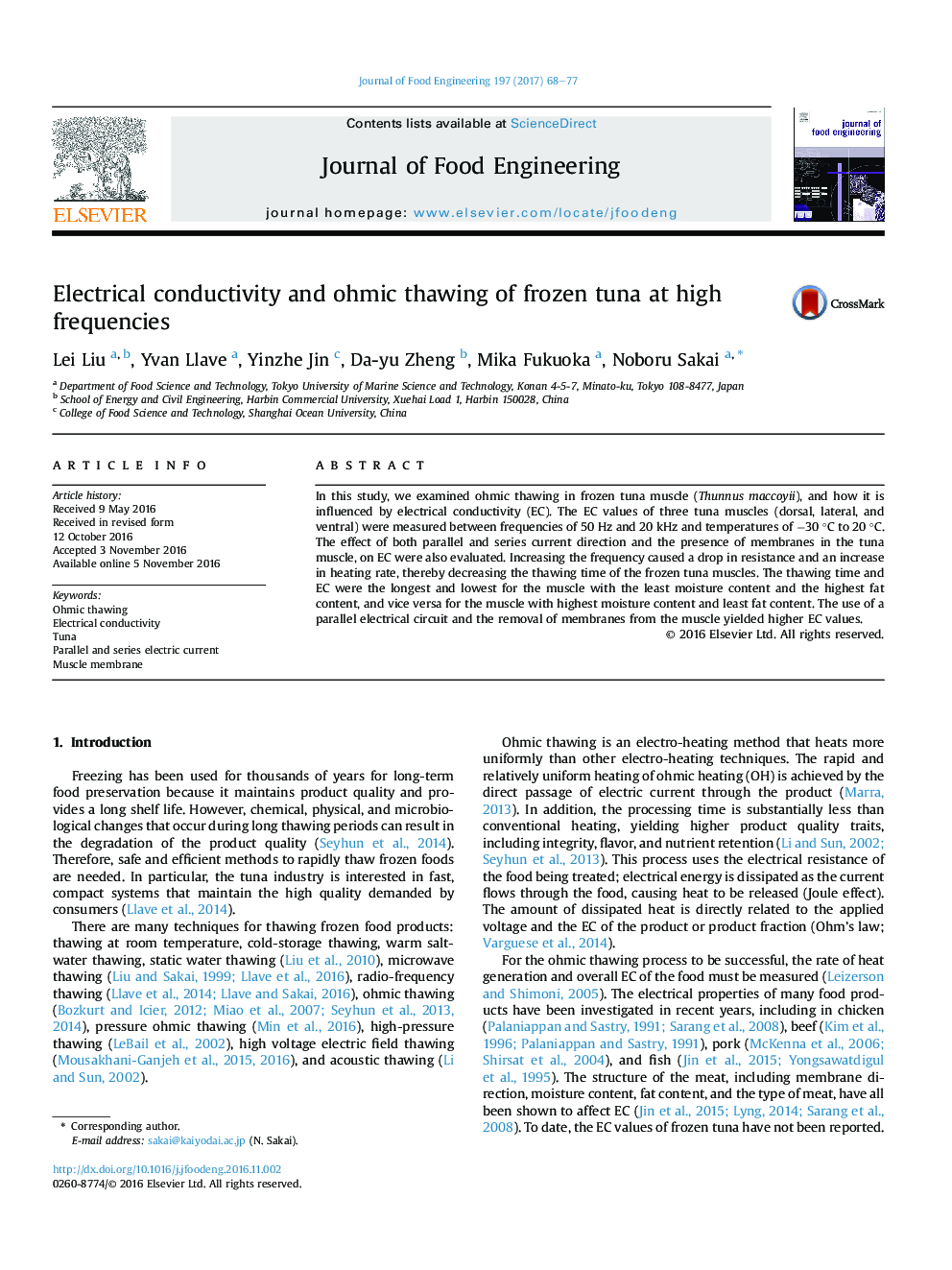| Article ID | Journal | Published Year | Pages | File Type |
|---|---|---|---|---|
| 4909162 | Journal of Food Engineering | 2017 | 10 Pages |
Abstract
In this study, we examined ohmic thawing in frozen tuna muscle (Thunnus maccoyii), and how it is influenced by electrical conductivity (EC). The EC values of three tuna muscles (dorsal, lateral, and ventral) were measured between frequencies of 50 Hz and 20 kHz and temperatures of â30 °C to 20 °C. The effect of both parallel and series current direction and the presence of membranes in the tuna muscle, on EC were also evaluated. Increasing the frequency caused a drop in resistance and an increase in heating rate, thereby decreasing the thawing time of the frozen tuna muscles. The thawing time and EC were the longest and lowest for the muscle with the least moisture content and the highest fat content, and vice versa for the muscle with highest moisture content and least fat content. The use of a parallel electrical circuit and the removal of membranes from the muscle yielded higher EC values.
Keywords
Related Topics
Physical Sciences and Engineering
Chemical Engineering
Chemical Engineering (General)
Authors
Lei Liu, Yvan Llave, Yinzhe Jin, Da-yu Zheng, Mika Fukuoka, Noboru Sakai,
